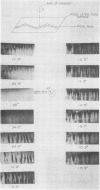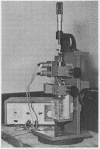Abstract
On polarization microscopy collagen fibres from human cadaveric anterior longitudinal, posterior longitudinal, and interspinous ligaments show a series of transmission and extinction bands. By observing changes in this pattern on rotating the polarizing stage and on rotating the fibres a crimped structure of the fibres was deduced and its parameters were calculated. From these data the force/strain behaviour of the fibres under low tension was calculated. This corresponded closely with the results from mechanical measurement. At the same time we documented alterations in the transmission and extinction patterns while under tensile load. The results suggest that it is the crimped structure that is responsible for the high extensibility of the collagen fibres under low tension. The initial extension is by deformity of the crimp segment. This avoids risk of tearing the collagen fibres.
Full text
PDF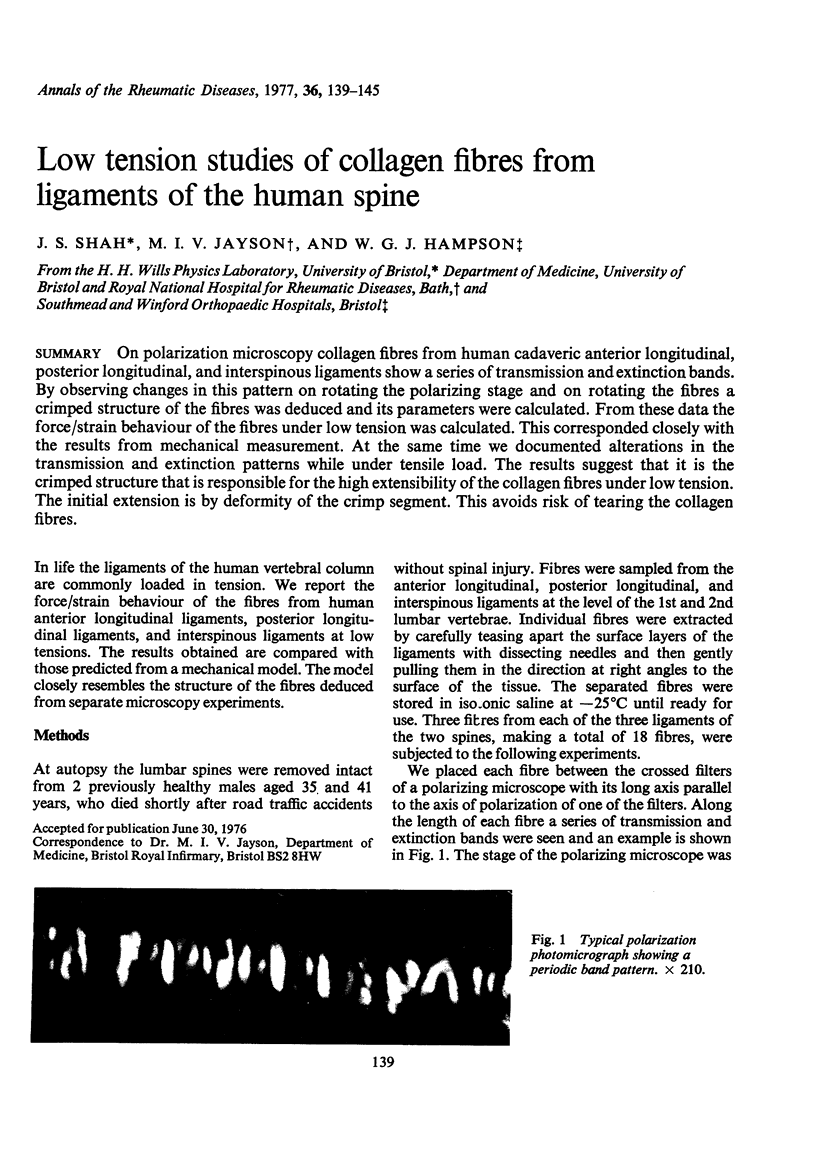
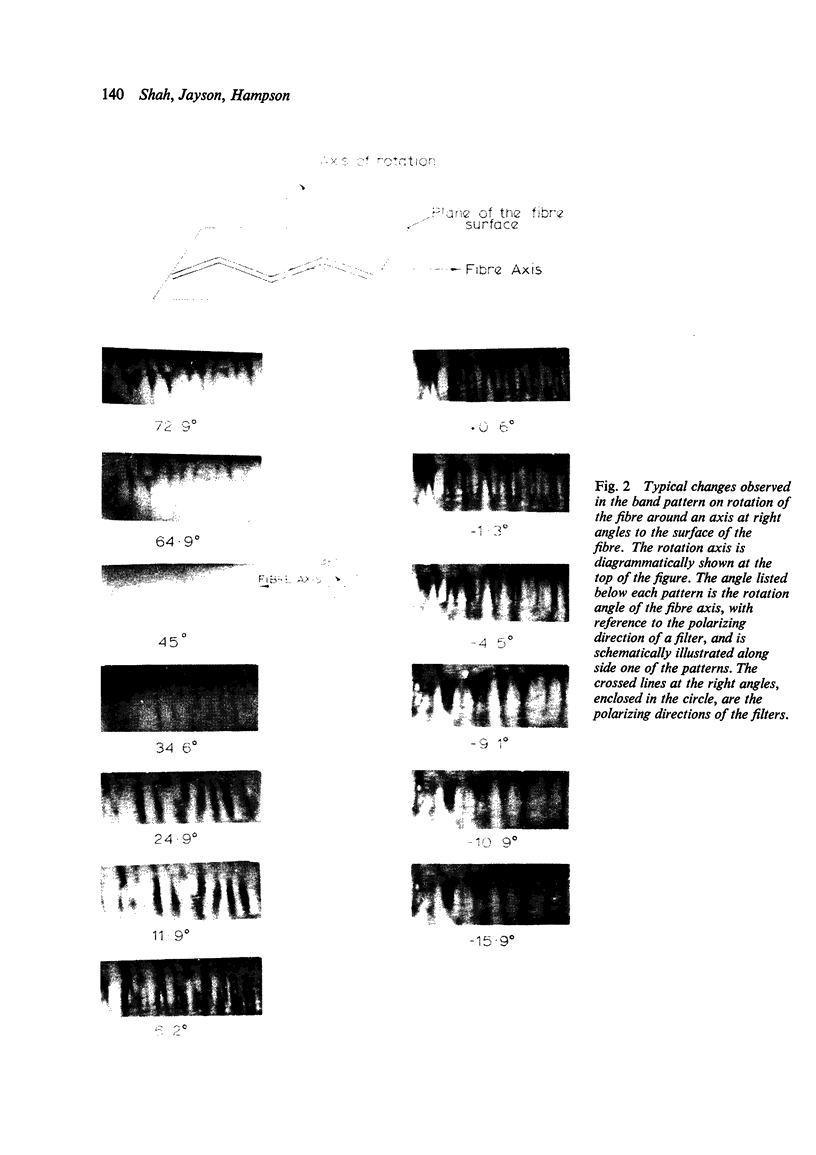
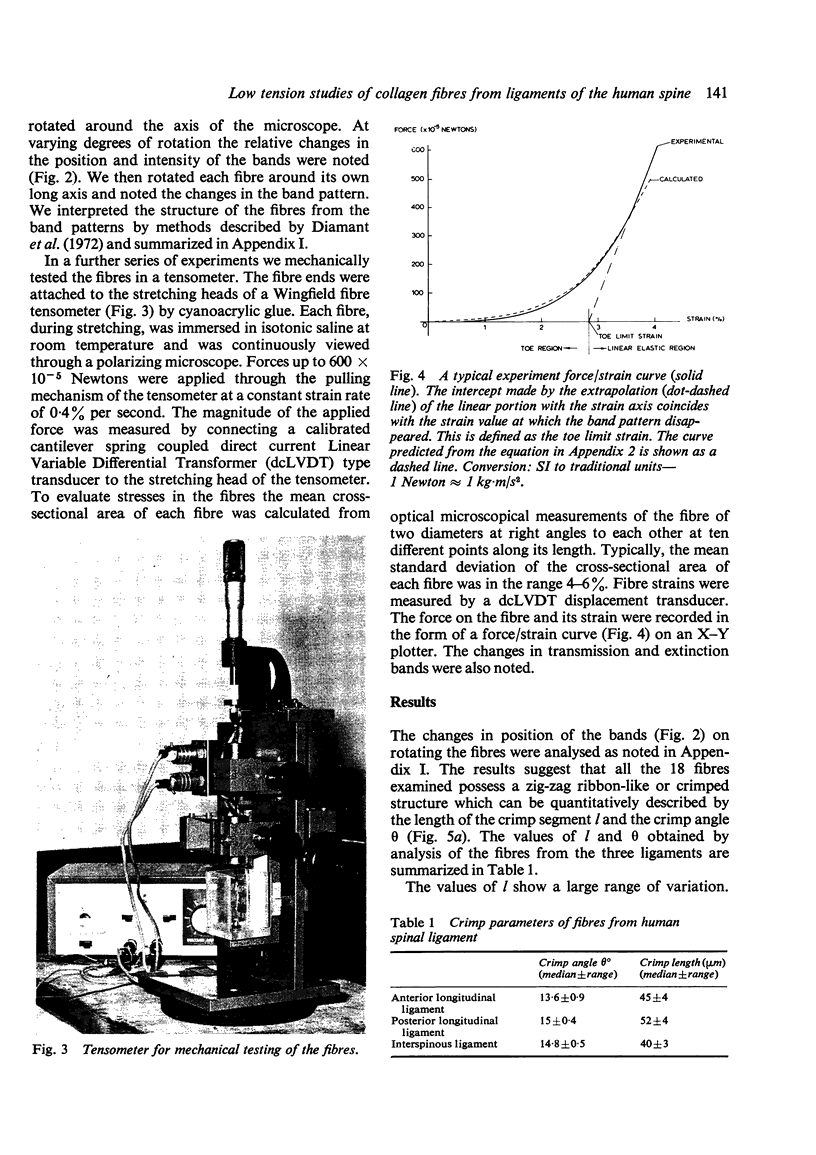
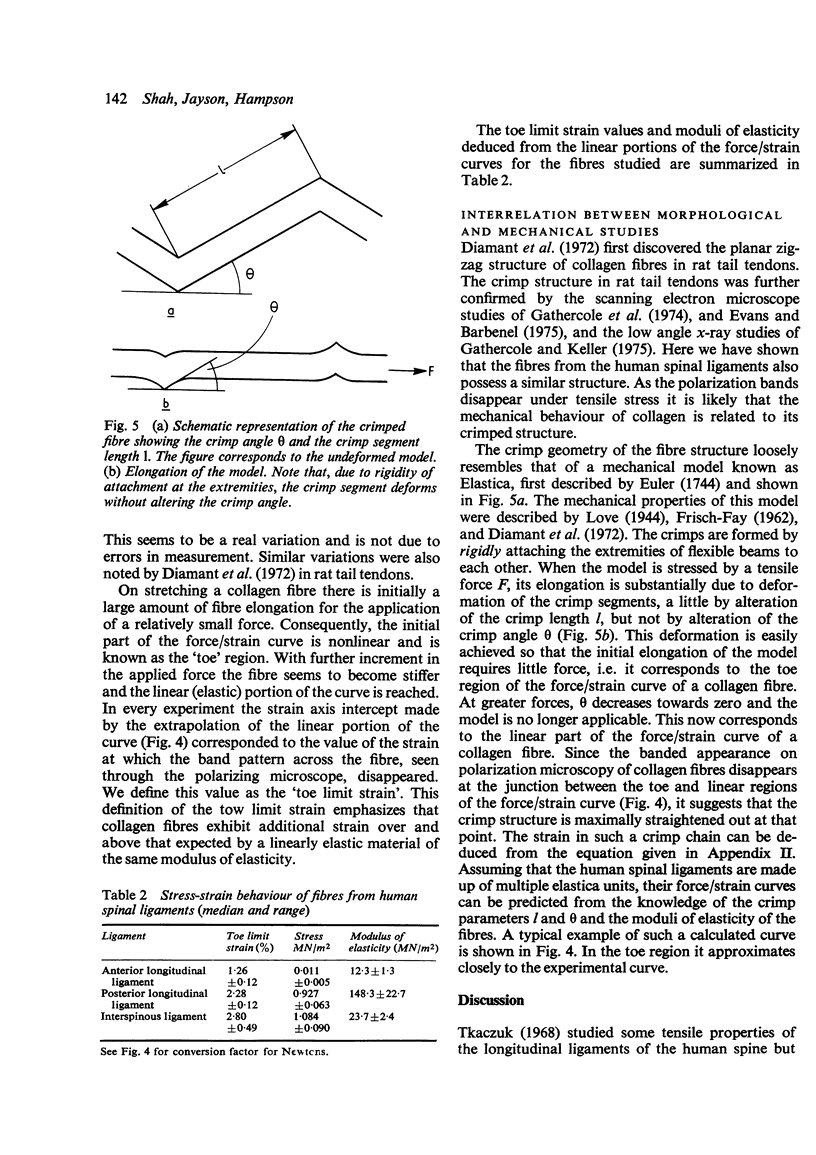
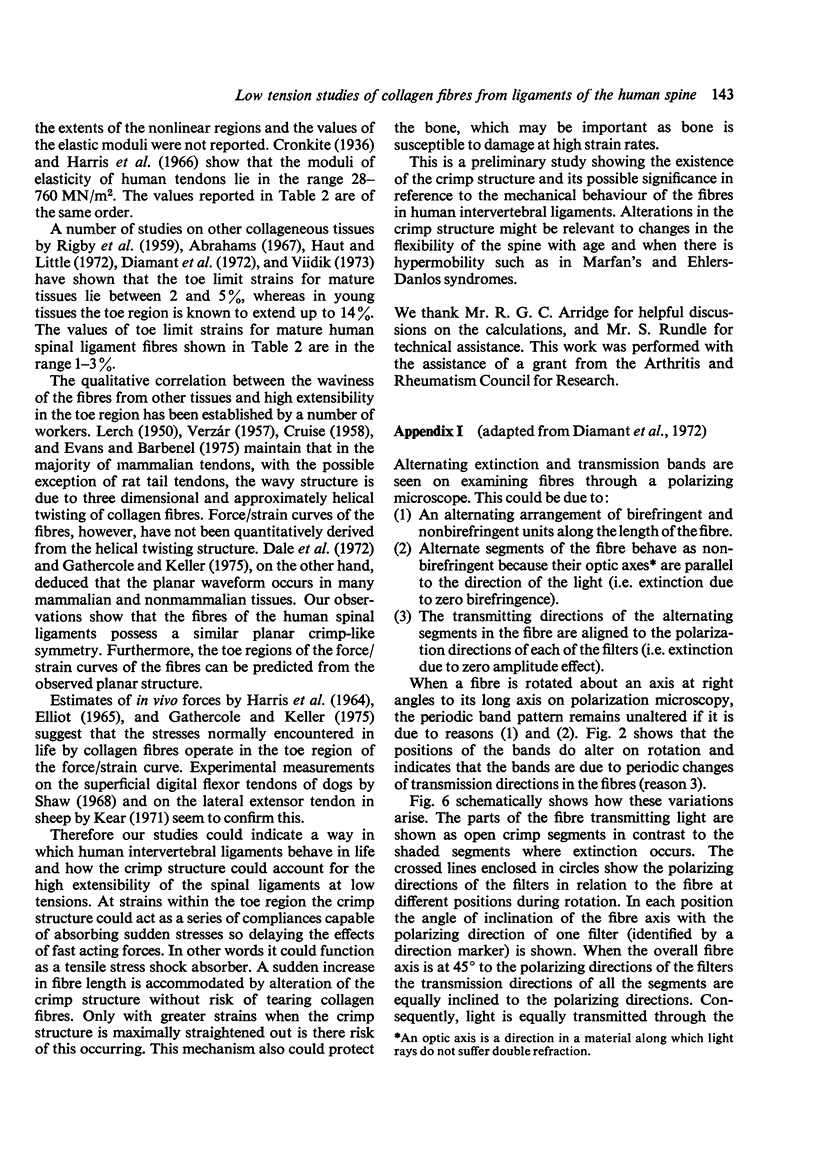
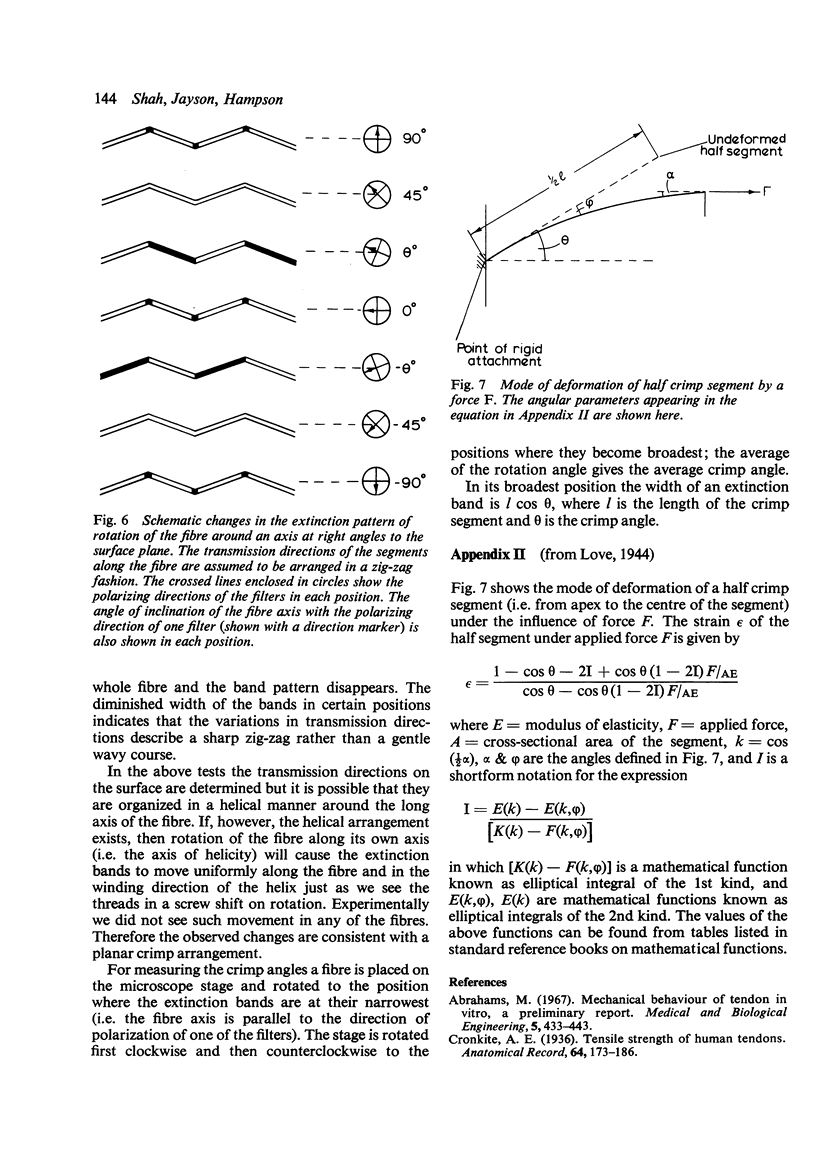
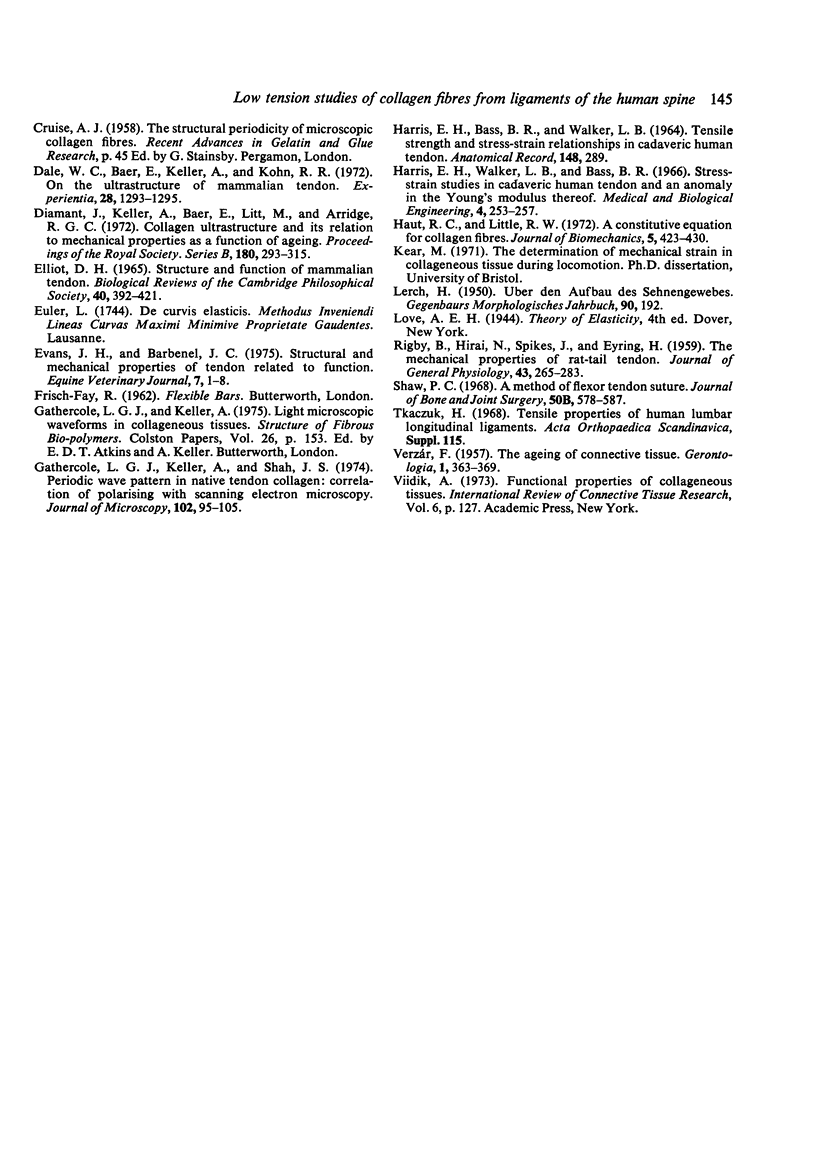
Images in this article
Selected References
These references are in PubMed. This may not be the complete list of references from this article.
- Abrahams M. Mechanical behaviour of tendon in vitro. A preliminary report. Med Biol Eng. 1967 Sep;5(5):433–443. doi: 10.1007/BF02479137. [DOI] [PubMed] [Google Scholar]
- Dale W. C., Baer E., Keller A., Kohn R. R. On the ultrastructure of mammalian tendon. Experientia. 1972 Nov 15;28(11):1293–1295. doi: 10.1007/BF01965303. [DOI] [PubMed] [Google Scholar]
- Diamant J., Keller A., Baer E., Litt M., Arridge R. G. Collagen; ultrastructure and its relation to mechanical properties as a function of ageing. Proc R Soc Lond B Biol Sci. 1972 Mar 14;180(1060):293–315. doi: 10.1098/rspb.1972.0019. [DOI] [PubMed] [Google Scholar]
- ELLIOTT D. H. STRUCTURE AND FUNCTION OF MAMMALIAN TENDON. Biol Rev Camb Philos Soc. 1965 Aug;40:392–421. doi: 10.1111/j.1469-185x.1965.tb00808.x. [DOI] [PubMed] [Google Scholar]
- Evans J. H., Barbenel J. C. Structural and mechanical properties of tendon related to function. Equine Vet J. 1975 Jan;7(1):1–8. doi: 10.1111/j.2042-3306.1975.tb03221.x. [DOI] [PubMed] [Google Scholar]
- Gathercole L. J., Keller A., Shah J. S. The periodic wave pattern in native tendon collagen: correlation of polarizing with scanning electron microscopy. J Microsc. 1974 Sep;102(Pt 1):95–105. doi: 10.1111/j.1365-2818.1974.tb03969.x. [DOI] [PubMed] [Google Scholar]
- Harris E. H., Walker L. B., Jr, Bass B. R. Stress-strain studies in cadaveric human tendon and an anomaly in the Young's modulus thereof. Med Biol Eng. 1966 May;4(3):253–259. doi: 10.1007/BF02474798. [DOI] [PubMed] [Google Scholar]
- Haut R. C., Little R. W. A constitutive equation for collagen fibers. J Biomech. 1972 Sep;5(5):423–430. doi: 10.1016/0021-9290(72)90001-2. [DOI] [PubMed] [Google Scholar]
- Shaw P. C. A method of flexor tendon suture. J Bone Joint Surg Br. 1968 Aug;50(3):578–587. [PubMed] [Google Scholar]
- Tkaczuk H. Tensile properties of human lumbar longitudinal ligaments. Acta Orthop Scand. 1968;(Suppl):1+–1+. doi: 10.3109/ort.1968.39.suppl-115.01. [DOI] [PubMed] [Google Scholar]
- VERZAR F. The ageing of connective tissue. Gerontologia. 1957;1(6):363–378. [PubMed] [Google Scholar]
- Viidik A. Functional properties of collagenous tissues. Int Rev Connect Tissue Res. 1973;6:127–215. doi: 10.1016/b978-0-12-363706-2.50010-6. [DOI] [PubMed] [Google Scholar]




